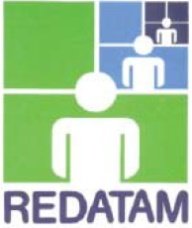REDATAM is the acronym of REtrieval of DATa for small Areas by Microcomputer
The Latin American and Caribbean Demographic Centre (CELADE), which has been the Population Division of the Economic Commission for Latin America and the Caribbean (ECLAC) since 1997, began the development of REDATAM in the 80s, under the financial support of the International Development Research Centre (IDRC) – Canada, the Canadian International Development Agency (CIDA), and the United Nations Population Fund (UNFPA).
One of its main objectives, and one that has continued to this day, is to support the National Statistical Institutes and other information-producing institutions in their need to process, analyze, and disseminate tabulations by small areas that could not be included in the official results of the censuses, given the printing limitation, among others.
Another of its objectives, and that has been deepened taking advantage of current technologies, is that it could be used on a personal computer, which would process the data very quickly, taken a little space as possible and, at the same time, easy to use.
About the history of the REDATAM versions

The first generation of REDATAM, which appeared in 1985, could process only one region by the computer, province or department of a country, and from only one data source (census or survey), and it took several hours to do so, in the old MS-DOS operating system.
The second generation called REDATAM-Plus, paved the way for the combination of information from different data sources in the same hierarchical structure, allowing the creation of multisectoral databases with millions of cases, the analysis with greater detail, and with the option to export the results to GIS systems as interface with pcARC/INFO.
In 1997, the third generation named winR+: REDATAM-Plus for Windows ver 1.1 Winr+ was presented to the user community, a technological leap. It was developed under the MS-Windows operating system and whith the new possibility of processing a full database.
In the second half of 2001, we advanced to the fourth generation RedatamG4, focused on the adaptation to users with different levels of knowledge.
For the first time REDATAM joins the world of the Internet, with the development of the Redatam Webserver module, offering online processing, which gave the countries the impetus for the possibilities of disseminating information using the portals of Internet of each institution.
This version was later called Redatam+SP in honor of Serge Poulard one of the main architects of the development for this new version under Microsoft Windows.
Later, in 2014, the Redatam7 generation was officially launched and it is the current version, which incorporated new functions and substantial improvements in the database creation, processing and analysis, administration and online disemination modules. At the same time, as is characteristic in each generation, the processing speed, ease of programming, generation of tables and export to various formats including the Extensible Markup Language - XML standard were improved.
Nowadays, in 2022, we are in full development of the new generation called RedatamX, according to technological changes, the new version will support Windows, Linux and Mac, and processors with 64-bit architecture. The new generation of REDATAM has the strategic support of the United Nations (UN) through important funds of technical cooperation of ECLAC and the Deutsche Gesellschaft für Internationale Zusammenarbeit (GIZ). We invite to use, and be part of the growing community of REDATAM users.
